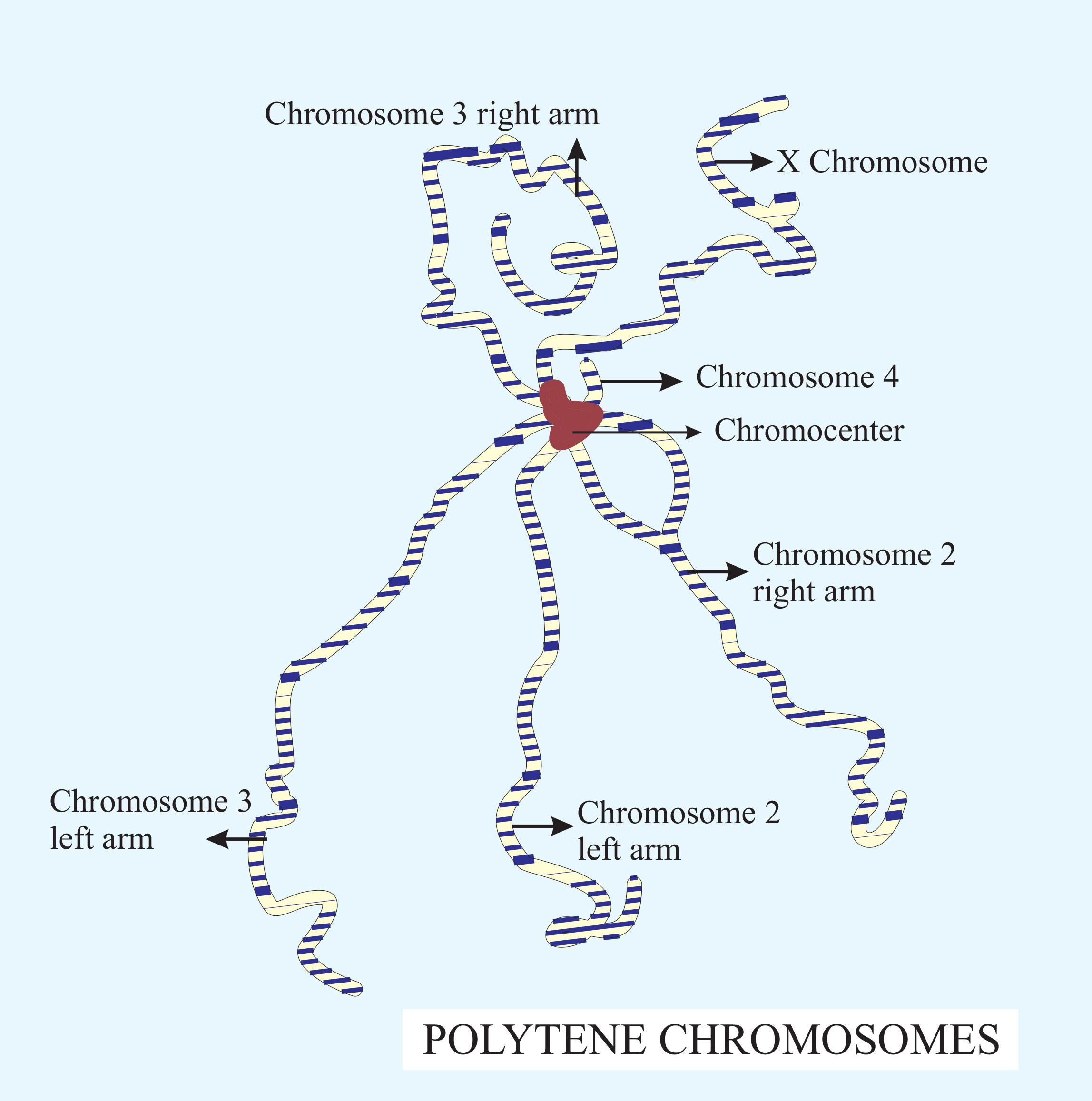
Draw the structure of the polytene chromosome and label its parts.
Answer
473.7k+ views
3 likes
Hint: Polytene chromosomes are different from the commonly isolated chromosomes as they have more than one strand of DNA. Some organisms have tissues that require overexpression of genes in order to carry out specialized functions. For this function, polytene chromosomes are required.
Complete answer:
- Polytene chromosomes are large chromosomes that contain thousands of DNA strands due to repeated DNA replication without cell division.
- They are found at the interphase nuclei of some larval tissue of flies.
- They are also found in the tissues of some insects, especially dipteran flies. They are most studied in Drosophila and other flies.
- Polytene chromosomes are seen at the interphase as distinct thick and thin banding patterns.
- The large size of the chromosome is attributed to the presence of longitudinal strands or chromonemata.
- Bands of the chromosome become enlarged at certain times to form swellings called puffs and the formation is called puffing. The puffs are indicative of mRNA synthesis.
- Their functions are as follows. The chromosomes help in cell expansion and increase the volume of cell nuclei. As they have a large amount of genetic material, it leads to the overexpression of genes which is required in some tissues of organisms.
- Polytene chromosomes are observed in the larval salivary glands of the drosophila. These genes are overexpressed to produce a large amount of saliva containing mucoprotein to help in pupation.
- The distinct bands are known as dark bands and interband.

Note:
- The puff regions in Chironomus are also known as Balbiani rings.
- Polytene chromosomes are also present in mammalian trophoblasts.
- The chromosomes are 70 to 110 times larger than normal metaphase chromosomes.
Complete answer:
- Polytene chromosomes are large chromosomes that contain thousands of DNA strands due to repeated DNA replication without cell division.
- They are found at the interphase nuclei of some larval tissue of flies.
- They are also found in the tissues of some insects, especially dipteran flies. They are most studied in Drosophila and other flies.
- Polytene chromosomes are seen at the interphase as distinct thick and thin banding patterns.
- The large size of the chromosome is attributed to the presence of longitudinal strands or chromonemata.
- Bands of the chromosome become enlarged at certain times to form swellings called puffs and the formation is called puffing. The puffs are indicative of mRNA synthesis.
- Their functions are as follows. The chromosomes help in cell expansion and increase the volume of cell nuclei. As they have a large amount of genetic material, it leads to the overexpression of genes which is required in some tissues of organisms.
- Polytene chromosomes are observed in the larval salivary glands of the drosophila. These genes are overexpressed to produce a large amount of saliva containing mucoprotein to help in pupation.
- The distinct bands are known as dark bands and interband.

Note:
- The puff regions in Chironomus are also known as Balbiani rings.
- Polytene chromosomes are also present in mammalian trophoblasts.
- The chromosomes are 70 to 110 times larger than normal metaphase chromosomes.
Latest Vedantu courses for you
Grade 10 | CBSE | SCHOOL | English
Vedantu 10 CBSE Pro Course - (2025-26)
School Full course for CBSE students
₹35,000 per year
Recently Updated Pages
Express the following as a fraction and simplify a class 7 maths CBSE

The length and width of a rectangle are in ratio of class 7 maths CBSE

The ratio of the income to the expenditure of a family class 7 maths CBSE

How do you write 025 million in scientific notatio class 7 maths CBSE

How do you convert 295 meters per second to kilometers class 7 maths CBSE

Write the following in Roman numerals 25819 class 7 maths CBSE

Trending doubts
Give 10 examples of unisexual and bisexual flowers

Draw a labelled sketch of the human eye class 12 physics CBSE

Differentiate between homogeneous and heterogeneous class 12 chemistry CBSE

Differentiate between insitu conservation and exsitu class 12 biology CBSE

What are the major means of transport Explain each class 12 social science CBSE

Franz thinks Will they make them sing in German even class 12 english CBSE




